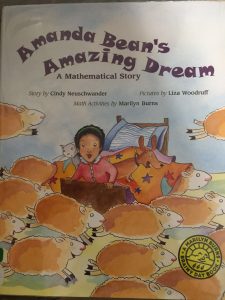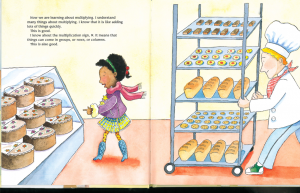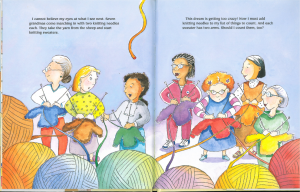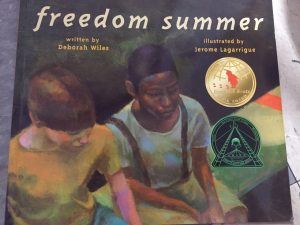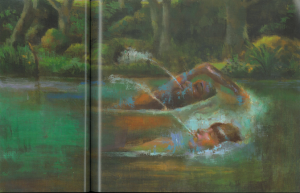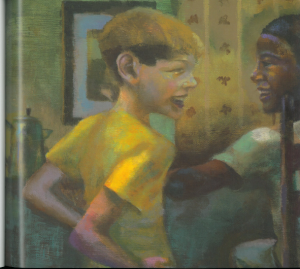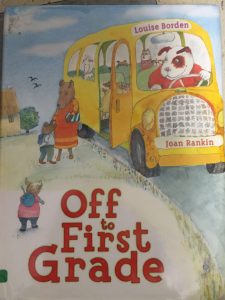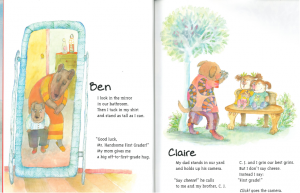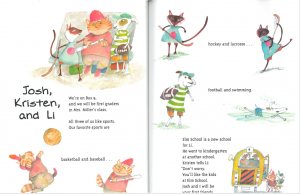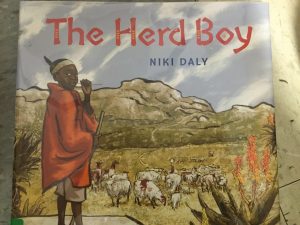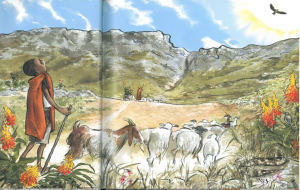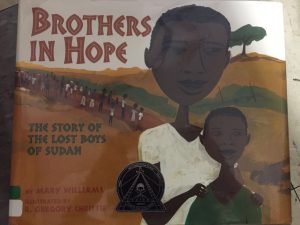
Author: Mary Williams
Illustrator: R. Gregory Christie
Publishing Information: Lee & Low Books Inc., 2005
Number of Pages: 36
Genre: Historical Fiction, Picture book
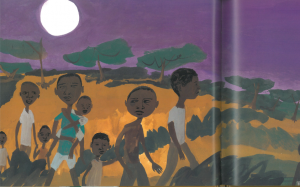
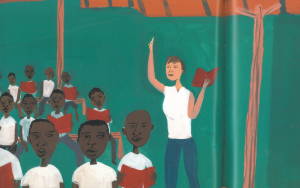
Analysis:
Garang and his family live a happy life before the war comes. He goes on a journey first to Ethiopia and then to Kenya with other boys who are lost. Finally, they are rescued and provided a home in the United States.
The book shows a historical fact by demonstrating a tough journey Garang and his friend have. The text functions as both a window and a mirror for children to look back at history and reflect many kinds of harm done by wars. During the journey, friendship, brotherhood and tenacity are presented.
I found some of the illustrations problematic. I do agree that the rescuer Tom and the teacher in the school are positive characters. However, the illustrator keeps depicting white people much taller and bigger that the Sudan boys. Besides, white characters are put in a higher space of the images. That may give children an impression that white people are supreme and stronger than black people.
Perceptually, the text in this book is relatively dense. The lost boys are moving to the right which demonstrates that they are moving forward but not secure. The book uses dark color to depict a depressing atmosphere. When people thought there were soldiers, the horizon on the image suddenly disappeared which signifies that people are nervous. Structurally, text and images overlap. The images are not framed which helps reader to actually participate in the story. Ideologically, the author and the illustrator hit on the following four aspects. Firstly, the book stresses on family bond. Garang’s father used to encourage him to be brave and not afraid of cattle. Garang always remembers his father’s words, “Garang, be brave. Your heart and mind are strong. There is nothing you cannot do” (P. 2). Secondly, the book promotes individuality. We can see distinguished characteristics of leadership on Garang through the journey. He makes decision for the group, allocates the work and encourages them to go to school. Thirdly, while talking about individuality, the book also helps children realize the importance of teamwork. The value of a group is presented when the boys help each other to go across the river. They never leave anyone behind. Fourthly, the book teaches children to cherish the peace we have today.

